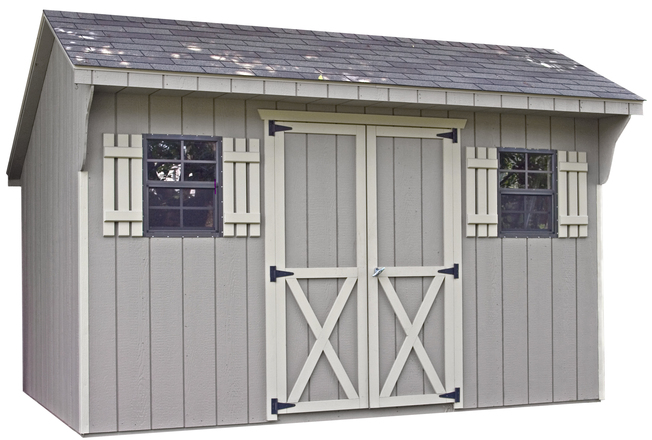A saltbox shed is a take from the American colonial architecture that is traditional in New England. The saltbox style features an asymmetrical construction of the roof, with one side having a long pitched slope all the way to the back. It became known as saltbox because of its resemblance to the once popular saltbox with wooden lid.

A saltbox shed is easy to build and can be finished in different ways to make it look spectacular, especially when finished with board and batten siding.
Building a Saltbox shed
Building the saltbox shed requires basic woodworking skills and someone to help you during part of the process. The following materials will be needed for the construction of the saltbox shed:
Tools
The following tools will be needed for the construction work:
- Miter saw and jigsaw
- Power drill and drill bits
- Spirit level
- Tape measure
- Carpentry gloves
Materials
- 2×4 lumber for the rafters
- plywood for roof underlayment
- screws
- tar paper
- asphalt shingles
- nails
Constructing the Shed
The first step of construction is assembling the frame and the siding. Once this step is completed, the construction of the roof follows.
The top ridge is constructed using pieces of 2×4 lumber whose length should run with an extra 8-inch allowance. Use galvanized screws to attach the top ridge. To make a saltbox shed roof, one side of the roof must run longer than the other side.
The rafters will be constructed using angle cut 2×4 lumber, having the 2-inch side up atop the ridge and top plates. Give an allowance of 5-6 inches between the top plate and the rafter??s edge. Put template rafters on both sides of the slope, using as many rafters as needed. Upon completion of the rafters, they should be attached to the top ridge using galvanized screws, giving equal spacing between rafters. Use 1×4 lumber as trim for a clean finish.
After the completion of the rafters, neatly cut ¾??plywood will be screwed to cover the structure. Tar paper can then be stapled to cover the plywood as protection against water damage. The asphalt shingles can then be laid, completing the roof of the saltbox shed.


